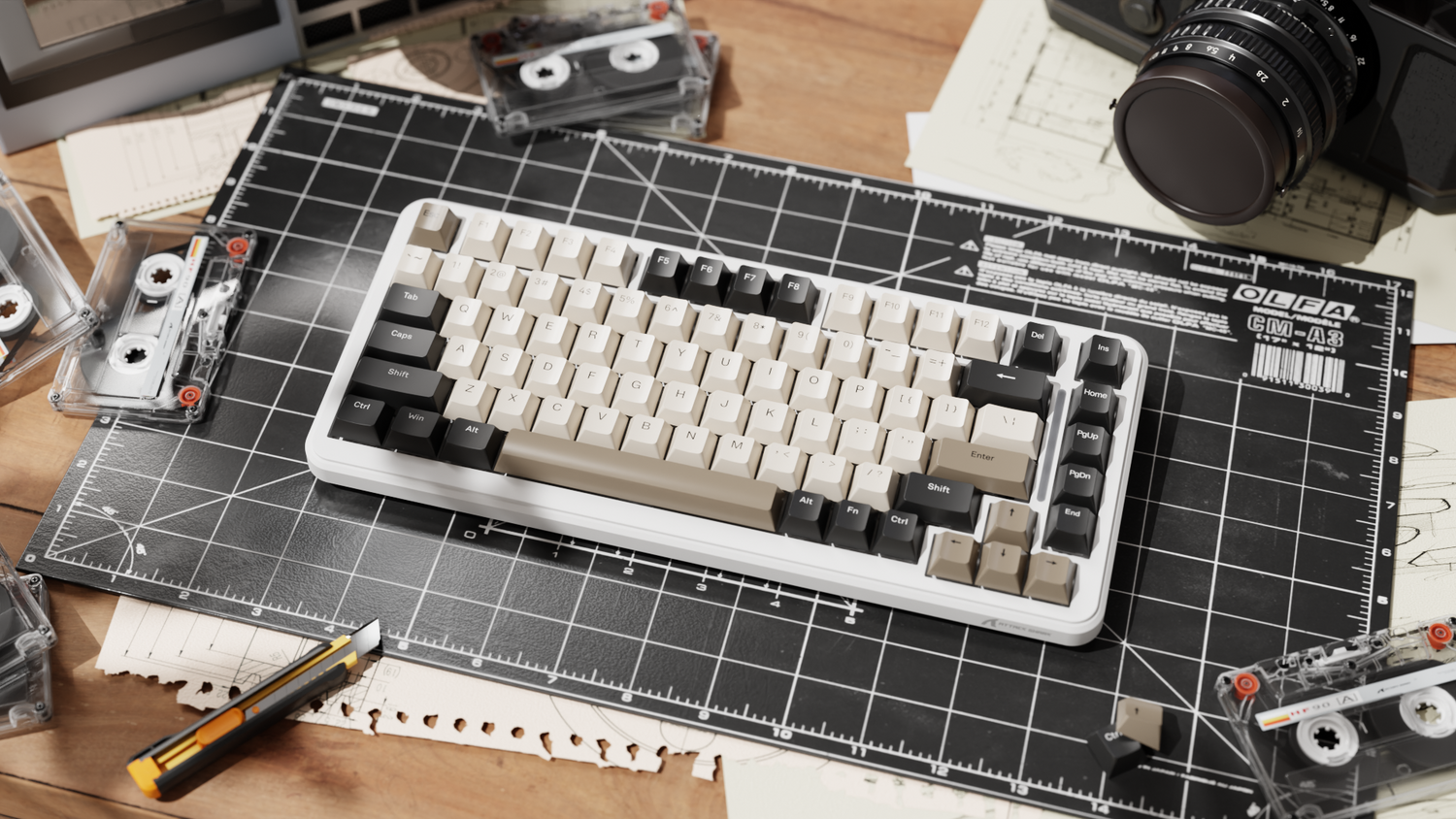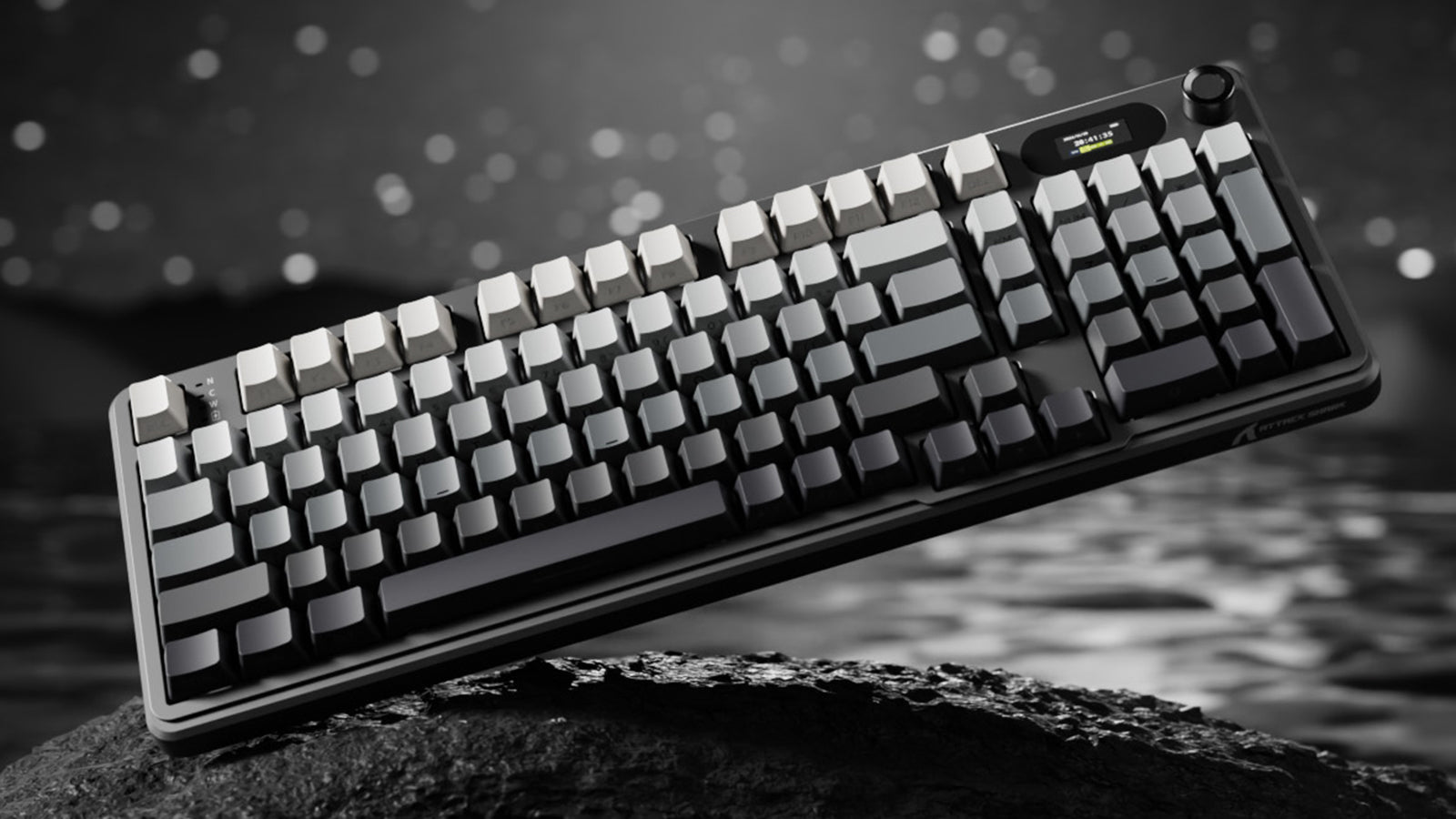Las preferencias regionales y décadas de desarrollo tecnológico han moldeado la evolución de los diseños de teclado. Dos estándares principales han surgido desde los primeros días de las máquinas de escribir hasta los teclados mecánicos contemporáneos: ANSI (Instituto Nacional Americano de Estándares) e ISO (Organización Internacional de Normalización). Estos diseños influyen en todo, desde la comodidad al escribir hasta el rendimiento en juegos; por lo tanto, su elección es muy importante para el uso diario de la computadora.
¿Cuáles son las principales diferencias entre los teclados ANSI e ISO?
Los diseños ANSI e ISO difieren más notablemente en su forma física. Mientras que el ISO tiene una tecla Enter única en forma de L que abarca dos filas, el ANSI tiene una tecla Enter ancha y rectangular. La tecla Shift izquierda en los teclados ANSI es más larga, lo que ofrece un acceso más fácil para quienes escriben con diez dedos. Los diseños ISO incluyen una tecla adicional cerca de la tecla Shift izquierda, aumentando su total a 105 teclas en comparación con las 104 del ANSI.
Los patrones de adopción regional influyen fuertemente en la disponibilidad y el soporte. América del Norte utiliza predominantemente ANSI, mientras que Europa prefiere ISO. Esta distribución no se trata solo de geografía; refleja consideraciones más profundas sobre el soporte de idiomas. Los diseños ISO sobresalen en acomodar caracteres adicionales necesarios para los idiomas europeos, ofreciendo teclas dedicadas para caracteres especiales y marcas diacríticas que los usuarios de ANSI deben acceder a través de combinaciones de teclas.

¿Qué impacto tienen ANSI e ISO en diferentes usuarios?
Para los jugadores, el diseño ANSI a menudo proporciona un acceso más intuitivo a las teclas de juego comúnmente utilizadas. La tecla Shift izquierda más larga y la posición consistente de la tecla Enter pueden marcar la diferencia en juegos de ritmo rápido. Muchos juegos populares están diseñados con el diseño ANSI en mente, aunque los jugadores profesionales de esports se adaptan a cualquiera de los estándares según su región.
Las consideraciones sobre la escritura y la productividad varían según el caso de uso. Para quienes buscan mejorar su velocidad de escritura, consulte esta guía sobre cómo escribir más rápido y aumentar su WPM. Los programadores a menudo prefieren ANSI por su acceso simplificado a corchetes y la barra invertida, mientras que los usuarios multilingües podrían favorecer ISO por su soporte adicional de caracteres. La tecla Shift izquierda dividida del diseño ISO puede ralentizar inicialmente la escritura en inglés con diez dedos, pero resulta valiosa para la entrada de idiomas europeos.
Ergonómicamente, ambos diseños tienen sus méritos. La tecla Shift izquierda más ancha de ANSI reduce la tensión en el dedo meñique para muchos usuarios, mientras que la tecla adicional de ISO puede mejorar la eficiencia para aquellos que utilizan frecuentemente caracteres especiales. La comodidad a largo plazo a menudo depende más de los hábitos de escritura y la postura adecuada que de la elección del diseño.

¿Cómo debería elegir entre ANSI e ISO?
Su diseño de teclado ideal depende de varios factores clave:
1. Uso principal: Los juegos y la programación generalmente favorecen ANSI por su diseño simplificado y la mayor disponibilidad de características específicas para juegos.
2. Requisitos de idioma: Si escribe regularmente en varios idiomas europeos, la tecla adicional de ISO y un mejor soporte para caracteres especiales lo convierten en la opción superior.
3. Disponibilidad regional: Considere la disponibilidad en el mercado local para teclados y piezas de repuesto.
4. Curva de aprendizaje: Cambiar entre diseños requiere tiempo de adaptación, particularmente para quienes escriben con diez dedos.
Para grupos de usuarios específicos:
- Jugadores: ANSI ofrece mejor compatibilidad con periféricos de juego y configuraciones de teclas predeterminadas.
- Programadores: ANSI proporciona un acceso más fácil a símbolos relacionados con la codificación.
- Usuarios multilingües: ISO sobresale en el soporte de entradas en múltiples idiomas.
- Trabajadores de oficina: Cualquiera de los diseños funciona bien, siendo la elección a menudo determinada por los estándares regionales.

¿Puede encontrar y usar tanto teclados ANSI como ISO?
La disponibilidad de teclados ANSI e ISO varía significativamente según la región y el fabricante. Los entusiastas de los teclados mecánicos personalizados encontrarán más opciones ANSI, incluidos conjuntos de teclas y diseños de PCB. Sin embargo, los teclados ISO siguen estando fácilmente disponibles en los mercados europeos.
El soporte de software es generalmente robusto para ambos diseños. Los sistemas operativos modernos detectan y configuran automáticamente los teclados, aunque algunos usuarios pueden necesitar ajustar la configuración de entrada de idioma. El software de reasignación de teclas puede ayudar a los usuarios a personalizar cualquiera de los diseños según sus preferencias, haciendo que las diferencias físicas sean menos significativas.
Elija su diseño perfecto hoy
Considere sus necesidades de escritura, tareas diarias y disponibilidad regional al seleccionar entre los diseños ANSI e ISO. Si bien ambos estándares son completamente capaces de manejar cualquier tarea informática, elegir el correcto para sus necesidades específicas mejorará su comodidad al escribir y su productividad.
FAQ
¿Dónde se utiliza el estándar ISO?
Los teclados ISO se utilizan principalmente en Europa y otros mercados internacionales, con diferentes países teniendo variantes específicas para acomodar sus requisitos lingüísticos.
¿Son los teclados de Apple ANSI?
Apple utiliza un diseño ANSI modificado para los teclados de EE. UU. pero proporciona variantes ISO para mercados internacionales, particularmente en Europa.
¿Se puede cambiar un teclado ANSI a ISO?
Convertir entre ANSI e ISO generalmente requiere reemplazar la PCB, la placa y el caso, lo que lo hace impráctico para la mayoría de los usuarios. Es mejor comprar el diseño deseado desde el principio.
¿Es ANSI lo mismo que QWERTY?
No, ANSI se refiere al diseño físico de las teclas, mientras que QWERTY describe la disposición de los caracteres. Tanto los teclados ANSI como los ISO pueden utilizar distribuciones de caracteres QWERTY.





Dejar un comentario
Este sitio está protegido por hCaptcha y se aplican la Política de privacidad de hCaptcha y los Términos del servicio.